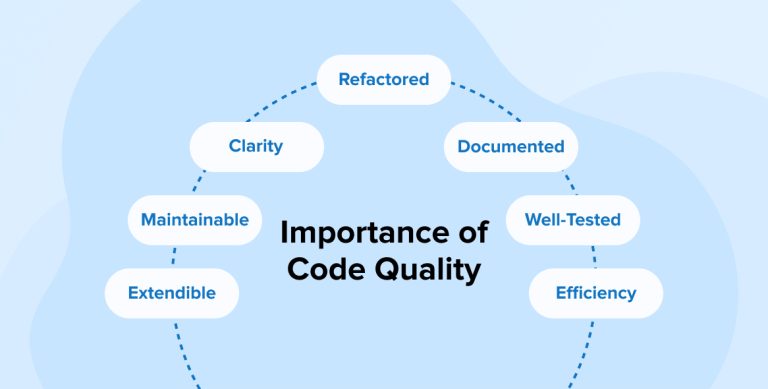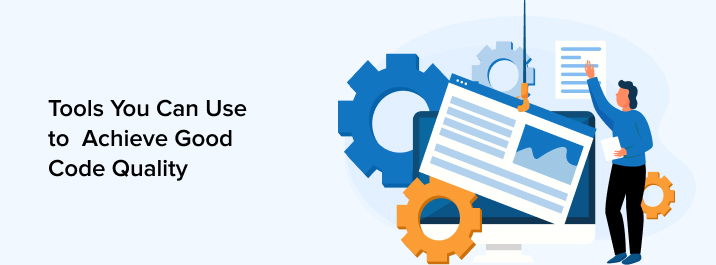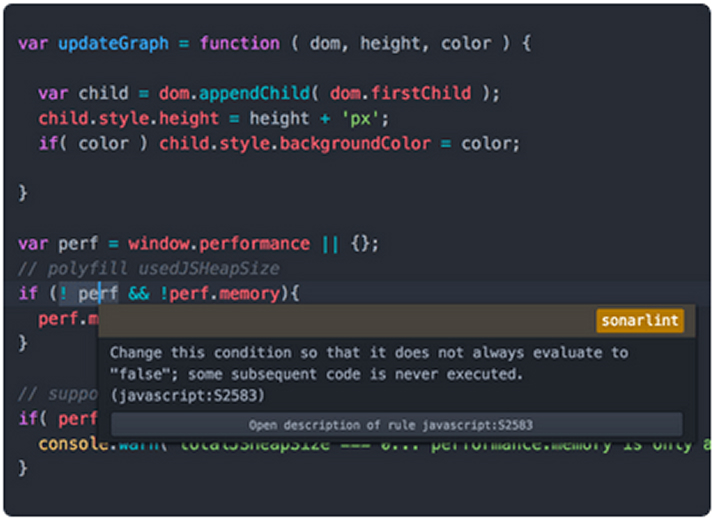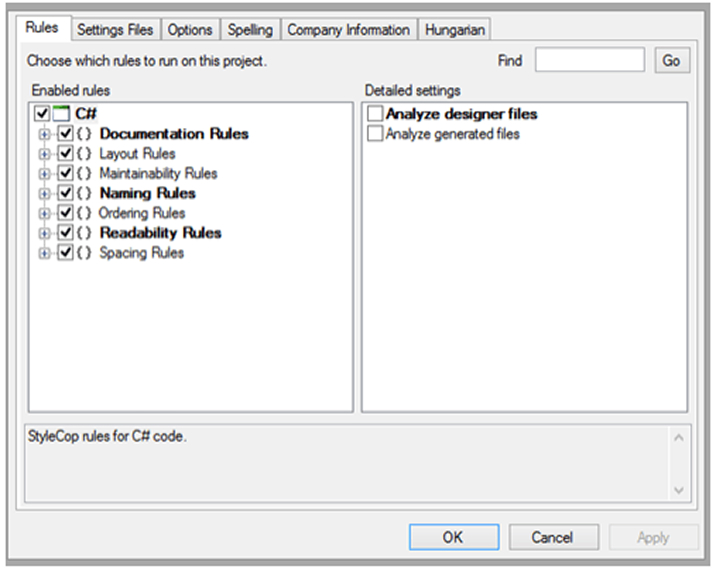Related Blogs

Now a day’s quality of software code is really important. If one declares “Hey, I have implemented a software!” It’s a good thing but if you say “Hey, I have created quality software!” then it will impact a lot. Writing a good quality of code is not a time-consuming and tedious monotonous task. It will be like you are planting a seed which definitely gives you various benefits later on and results in a fruitful outcome. We as a custom software development company always say to the customer that we will provide you the best industry-standard software but are we actually providing it? Do we follow any specific rules? Just think about it.
1. What do You Mean by Code Quality?
When we talk about code quality, it means a combination of various requirements and attributes, prioritized and determined by your business. There are some main attributes that can be used to specify the overall software quality and they are –
- Extendible: To ensure code quality, your software development code has to be extendible. It is not a good thing if you have to throw it away after some time because it is called a bad quality code.
- Maintainable: A high code quality isn’t very complicated. Anyone who is working to improve it has to understand the entire context of the code structure if they want to make any changes.
- Clarity: The quality of your code can be tested when it can be easily read and understood by anyone who is not even the creator of the code. If the code is easy to understand, maintaining and extending it becomes easier for an expert who is new at the development process.
- Refactored: As per the right coding standard, its formatting needs to be consistent. The quality code must also follow the language’s coding conventions.
- Documented: One of the best things about developing software code is self-explaining. When any legacy code developer is designing the code, he is recommended to always add comments to the code so that it clearly explains the functions and roles to the code review team.
- Well-tested: When it comes to regularly testing code, if there are software bugs, it shows great code quality. For this, thorough testing filters out major bugs and this helps in ensuring the quality of your code that enables software to work smoothly.
- Efficiency: High-quality code is something that doesn’t use unnecessary resources when it comes to performing the desired action.
2. Why Do We Require High-Quality Code?
Everyone likes to use quality software application development that performs fast and efficiently. Below are the key benefits of good quality code.
- Easy to read
- Easy to maintain
- Easily understandable
- Clean & reusable code
- Effective performance
- Code consistency throughout the software
- Easy to demonstrate or knowledge transfer
3. How to Measure Code Quality?
When it comes to measuring high-quality code, it becomes a tough task for any modern software sizing algorithm. The main reason behind this is that sometimes it becomes really hard to define the right code quality. For instance, the customers will feel that everything is working correctly but they won’t know what the reality is. It would only show the customers what they want to see, but the fact would be that finding the initials of given user names would be a trick while writing the code.
And this is why measuring code quality is important. For this, some people define and apply different quality metrics to the code and they also use different tools that offer reports of the metrics. For instance, it detects density, coupling, fan-in & fan-out, cyclomatic complexity, and Halstead complexity measure of the code written. Besides this, the best way to measure overall code quality is by taking a qualitative approach into consideration. It enables any web application developer to consistently follow rules for writing the code.
In this way, you can measure the higher code quality and this eventually helps the software to lead the market.
4. Which Code Quality Metrics Should Be Used?
The metrics you can use are –
4.1 Defect Metrics
The defect metrics count the number of defects and severity of those defects to bring you out of the technical debt and this is important to improve the quality of your code.
This metric includes:
- Time to identify the defects and correct them.
- Identify the stage in which the code defect originates.
- A number of open defect reports.
- Defect density.
4.2 Complexity Metrics
Complexity metrics is a concept that helps in measuring the overall software quality. Cyclomatic complexity measures the total number of linearly independent paths that are available in the software program’s source code.
Besides this, you can also understand the quality of the code by calculating Halstead’s complexity measures. This includes testing things like –
- Program vocabulary
- Difficulty
- Program length
- Calculated program length
- Effort
- Volume
5. How to Achieve Good Code Quality?
There are basic points which you need to focus on while doing code –
- Add proper comments on every method, function, and logic.
- Remove unused commented code which you left as it is while doing code.
- Write generalized code which can be reusable.
- Use proper data types and names for properties, variables, methods, and classes.
- Do proper casting only when it’s needed.
- Loops directly impact performance. Try to avoid it or check the other solutions.
- Use basic oops fundamentals as possible as you can. It will provide you overall clean architecture.
- Do code review once you develop the functionality or module or page.
6. Tools You Can Use to Achieve Good Code Quality

There are several tools and extensions available online to use for maintaining the proper standard of code, style and provide you with suggestions for possible refactoring code or methods. Below is the overview of some tools that are commonly used –
6.1 SonarLint
SonarLint is an open-source IDE extension that helps you detect and fix quality issues as you write code. Like a spell checker, SonarLint curlicues flaws so that they can be checked and fixed before committing code.
Below are the features of using SonarLint –
- Bug detection: Benefit from thousands of rules which detect common mistakes, tricky bugs, and known vulnerabilities.
- Instant feedback: On-the-fly! Issues or mistakes are detected and reported instantly while you code, the same as a spell-checker tool.
- Know what to do: SonarLint accurately finds the location where the problem is and gives you recommendations/solutions on how to fix it.
- Learn from your mistakes: Clean texts let you understand issues in detail and improve your coding standards.
- Uncover old issues: Check issues were already existing, and fix them before committing your code.

6.2 SonarQube for Software Quality
SonarQube (formerly known as Sonar) is an open-source tool suite to measure and analyze the quality of source code. It is developed in Java but is able to analyze the code in about 20 different programming languages.
Below are the features of using SonarQube –
- Continuous Inspection SonarQube provides the capability to show the health of an application along with highlighting issues newly introduced.
- Detect Tricky Issues SonarQube Code analyzers are equipped with powerful path-sensitive dataflow engines to detect tricky issues such as null-pointers dereferences, logic errors, resource leaks.
- Centralize Quality One place to implement a shared vision of code quality for programmers, tech leads, managers, and executives in the management of some to several thousand projects.
- DevOps Integration SonarQube integrates with the entire DevOps toolchain including build systems, CI engines, promotion pipelines… using webhooks, and its comprehensive RestAPI.
6.3 StyleCop
StyleCop analyses the consistency of source code. It enforces developers to follow a specific set of rules to maintain consistency in code. It can be executed from inside of Visual Studio or integrated into an MSBuild project. StyleCop has also been integrated into many third-party development tools.
StyleCop provides a various set of rules which performs to our code. You can also customize rules based on your needs. Below are the set of rules –
- Documentation
- Layout
- Maintainability
- Naming
- Ordering
- Readability
- Spacing

You can add StyleCop to your project via the NuGet package manager.
6.4 ReSharper
On-the-fly code quality analysis is available in XAML, CSS, C#, ASP.NET, VB.NET, TypeScript, JavaScript, HTML, and XML. ReSharper will let you understand if your code can be developed and recommend automatic quick fixes. ReSharper warns you when there’s a problem in your code and also provides hundreds of quick fixes to solve problems automatically. In most cases, you can select the best quick-fix from a variety of options.
ReSharper contains various kinds of extensions/tools to perform different types of checks.
7. Conclusion
In conclusion, software code quality is essential for maintainability, efficiency, and clarity. By focusing on extendibility and using tools like SonarLint and SonarQube, developers can identify and fix issues early. Investing in code quality results in reliable software that adapts to evolving needs, ensuring long-term value and meeting customer expectations.
Subscribe to our Newsletter
Signup for our newsletter and join 2700+ global business executives and technology experts to receive handpicked industry insights and latest news
Build your Team
Want to Hire Skilled Developers?





Comments
Leave a message...